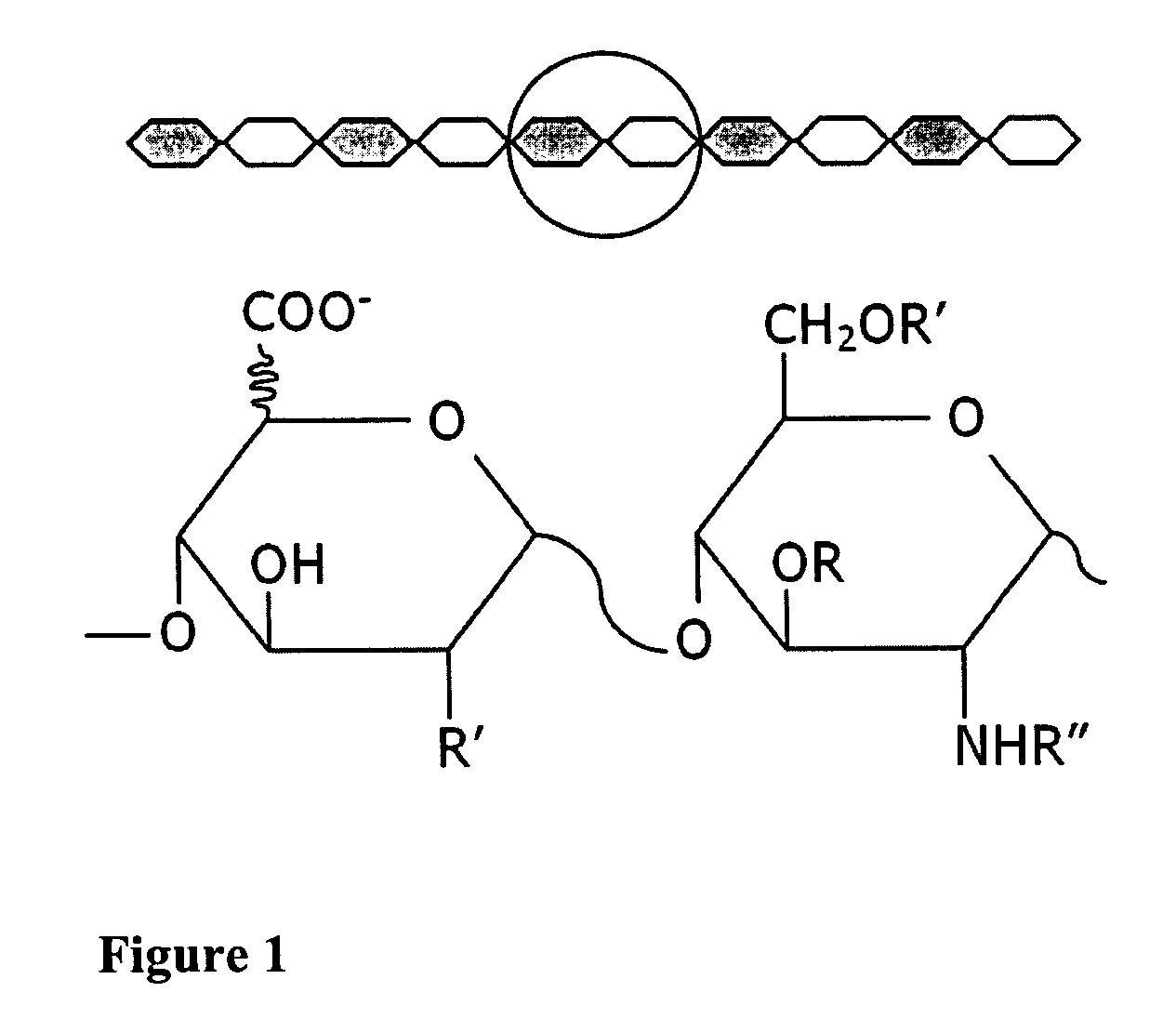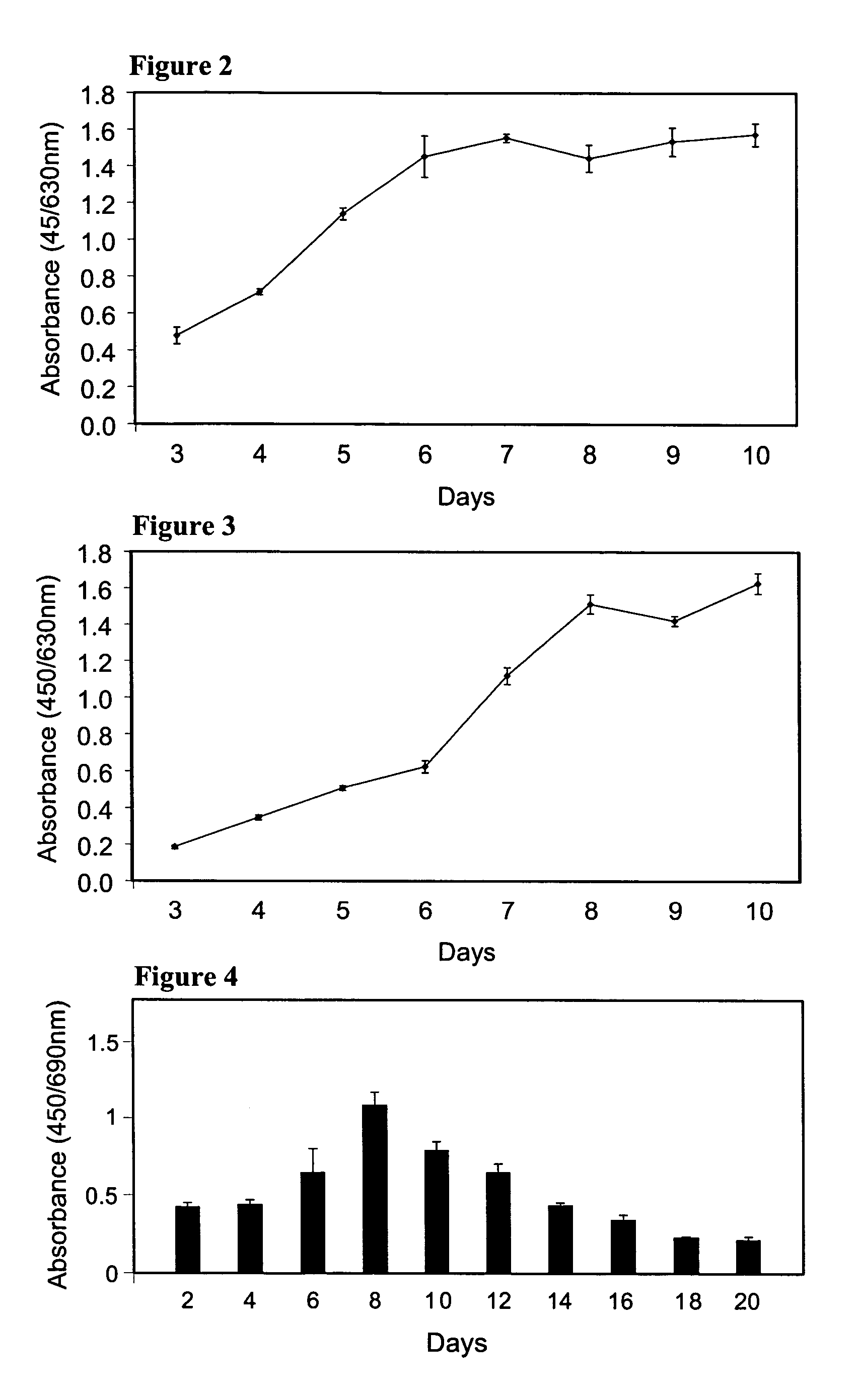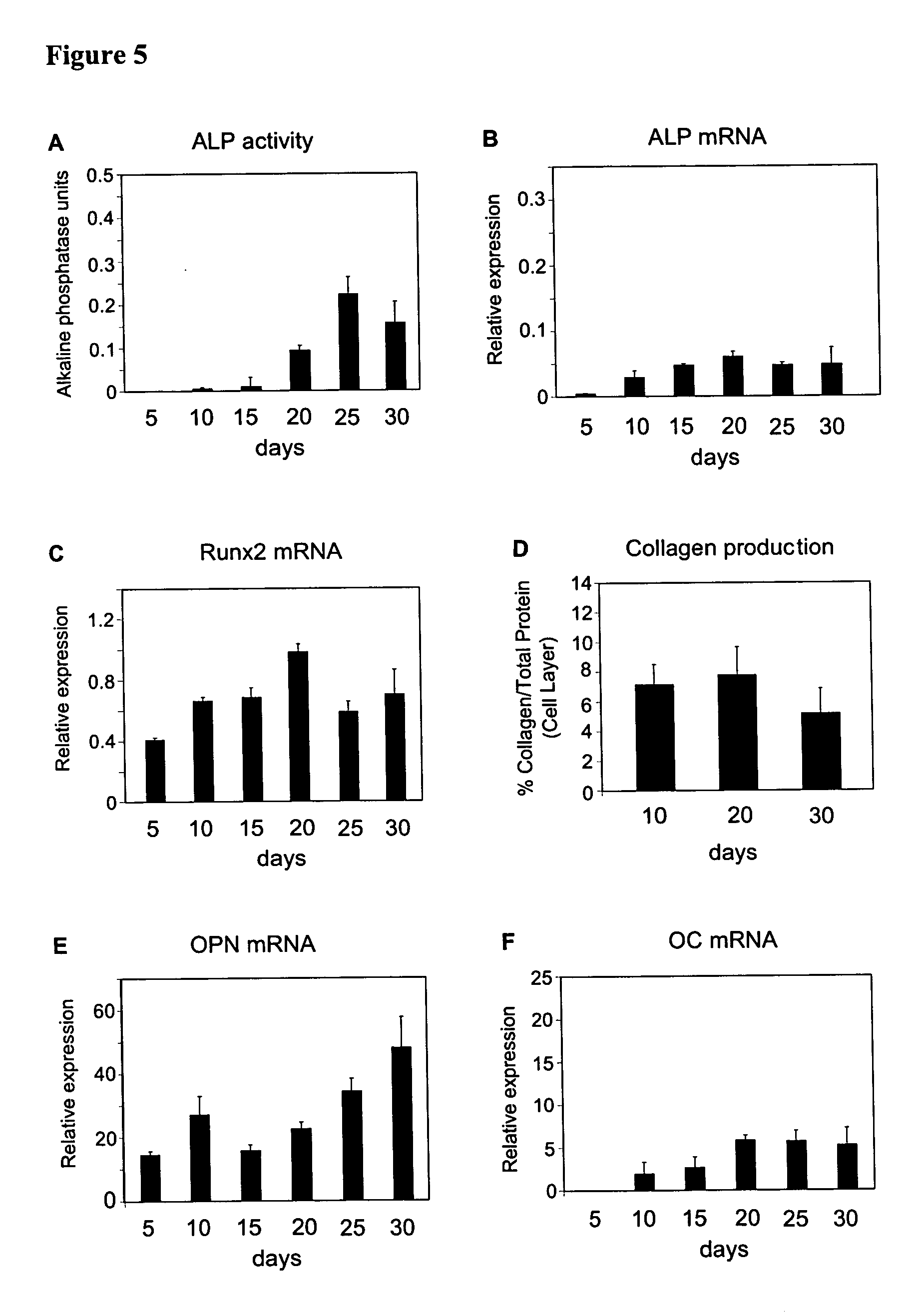Composition for stimulating bone growth and differentiation and method for isolating same
a technology of differentiation and differentiation, which is applied in the field of isolated bone, can solve the problems of poor clinical efficacy, poor clinical efficacy, and inability to achieve the effect of enhancing bone cell growth and particularly useful properties
- Summary
- Abstract
- Description
- Claims
- Application Information
AI Technical Summary
Benefits of technology
Problems solved by technology
Method used
Image
Examples
example 1
Cell Culture and Radiolabelling
[0177] Bone precursor MC3T3 cells were grown in 250 ml tissue culture flasks in 5% FCS / DMEM in a 10% CO2 / air-humidified incubator. When isolating logarithmic growth HS, radiolabel was added 24 h post-passaging and the cells allowed to grow unhindered for 3 days. To isolate HS from contact-inhibited cells, media on the cells was changed to 0.5% FCS / DMEM post-confluence and radiolabelled (20 μCi / ml) 24 h after the media was changed. Cells were maintained at confluence for 3 days and then the media collected and frozen at −20° C. until required. Cell membranes were prepared in lysis buffer (1% Triton X100, 150 mM NaCl, 10 mM Tris pH 7.4, 2 mM EDTA, 0.5% NP 40, 0.1% SDS containing the protease inhibitors 1 mM sodium orthovanadate, 10 μg / ml leupeptin, 1 μg / ml aprotinin and 1 mM PMSF). The cellular ECM was collected with lysis buffer plus 6 M Urea.
example 2
Determination of metabolic Activity using WST-1
[0178] Unless otherwise indicated, MC3T3-E1 cells were plated at 5000 cells / cm2 into wells of a 96 well plate in triplicate, allocating 3 wells to each time point, and grown in osteogenic media for 3-10 days. The Cell Proliferation Reagent WST-1 (Roche Diagnostics, Singapore) was added to triplicate wells at each time point, diluted 1:10 into the media. The reaction was catalysed by the conversion of WST-1, a tetrazolium salt, into formazon by mitochondrial dehydrogenase, which directly correlates to the number of metabolically-active cells in the culture. The reaction is incubated for 37° C. for 30 min, liberating a red colour, and read at 450 nm with a reference wavelength of 630 nm on a Victor3™ Multilevel Plate Reader (Perkin Elmer, Boston, Mass., USA). A blank well containing only media was used for background correction due to discolouration by the media.
[0179] As the assay can be performed and read under sterile conditions, cel...
example 3
Determination of Cell Proliferation using BrdU
[0180] Cell proliferation was analysed with a Cell Proliferation ELISA colorimetric kit (Roche, Switzerland). MC3T3-E1 cells were incubated with 10 μM BrdU for 2 h at 37° C., denatured, fixed and incubated with anti-BrdU-POD for 90 min at RTP according to the manufacturer's instructions. The reaction was catalysed by the addition of a tetramethylbenzidine substrate solution and terminated after 15 min with 1 M H2SO4. The absorbance was read at 450 nm (with a reference of 690 nm) using a Bio-Rad® Benchmark™ Microplate Reader (Bio-Rad, Calif., USA) and corrected using blank and background controls.
PUM
| Property | Measurement | Unit |
|---|---|---|
| wavelength | aaaaa | aaaaa |
| wavelength | aaaaa | aaaaa |
| pH | aaaaa | aaaaa |
Abstract
Description
Claims
Application Information
 Login to View More
Login to View More - R&D
- Intellectual Property
- Life Sciences
- Materials
- Tech Scout
- Unparalleled Data Quality
- Higher Quality Content
- 60% Fewer Hallucinations
Browse by: Latest US Patents, China's latest patents, Technical Efficacy Thesaurus, Application Domain, Technology Topic, Popular Technical Reports.
© 2025 PatSnap. All rights reserved.Legal|Privacy policy|Modern Slavery Act Transparency Statement|Sitemap|About US| Contact US: help@patsnap.com



